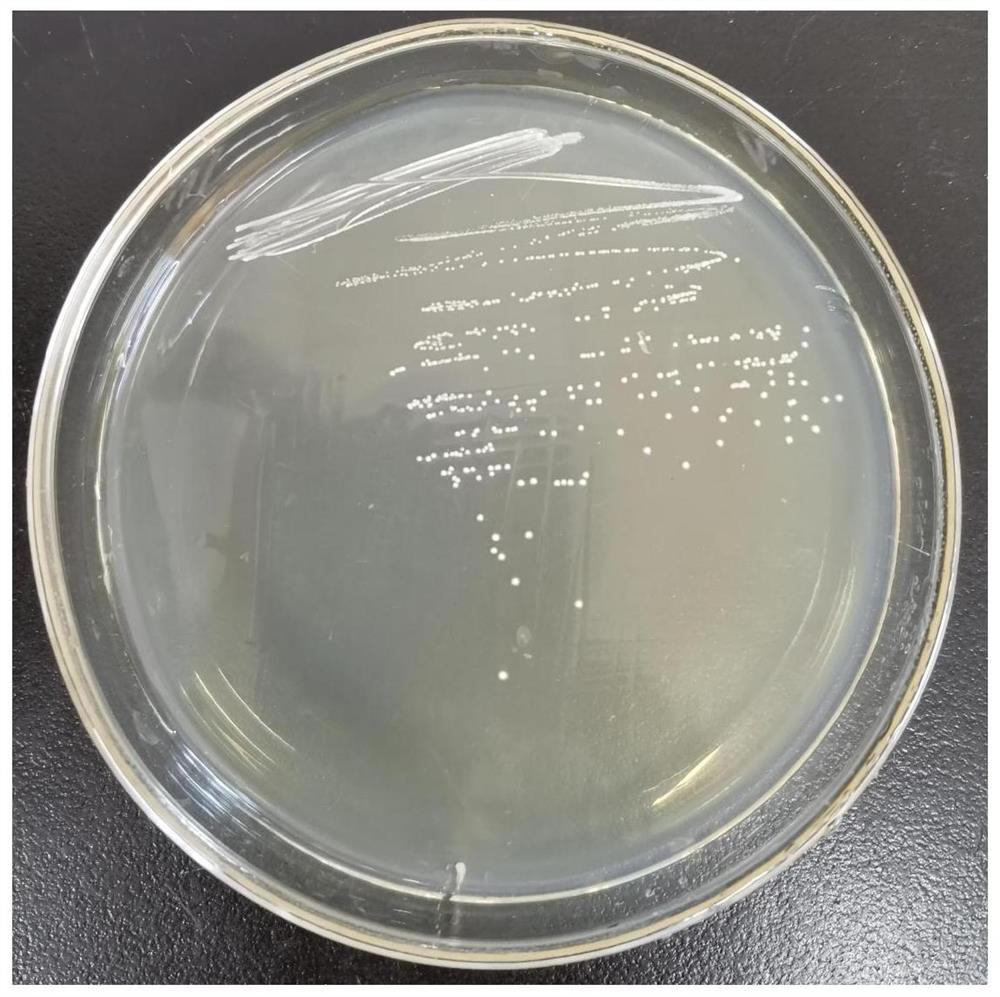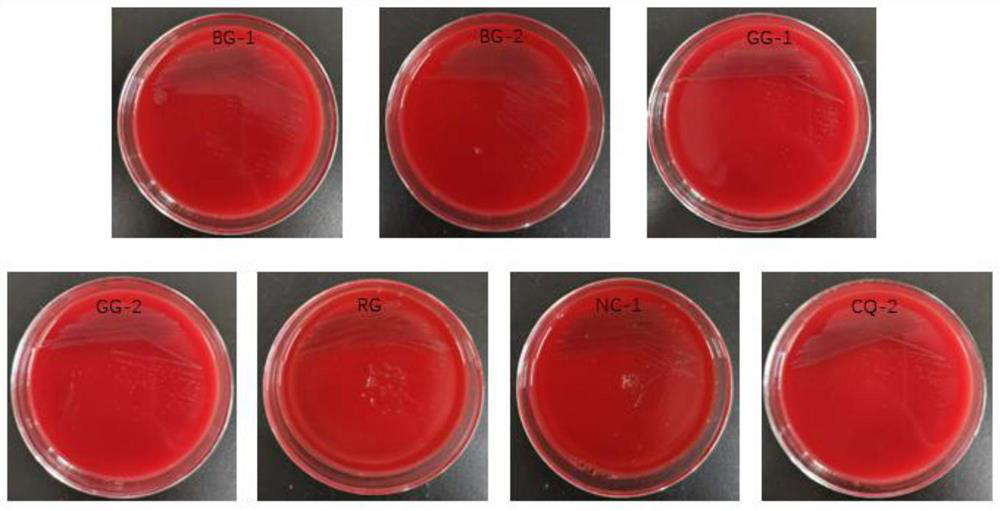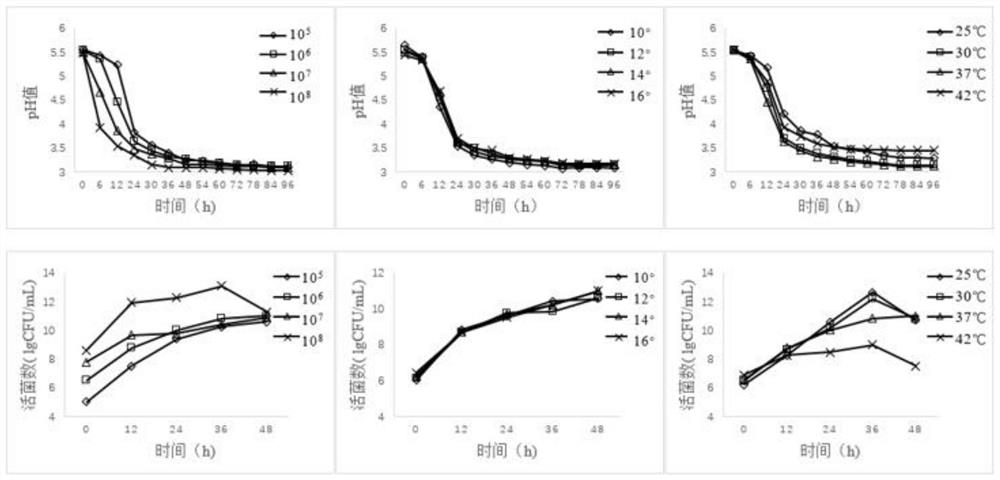Probiotic characteristic lactic acid bacteria directionally screened from tibetan kefir grain, screening method and application
A technology of directional screening and lactic acid bacteria, applied in the field of lactic acid bacteria, can solve the problems of poor anti-biliary ability, small number of viable bacteria, weak tolerance to gastric juice, etc., and achieve strong antibacterial performance, strong purpose, and strong anti-oxidation effect
- Summary
- Abstract
- Description
- Claims
- Application Information
AI Technical Summary
Problems solved by technology
Method used
Image
Examples
Embodiment 1
[0030] Embodiment 1 acid tolerance test
[0031] Preparation of lactic acid bacteria suspension: Centrifuge the three-generation activated lactic acid bacteria liquid, discard the supernatant, add PBS (pH7.4) to wash three times, add PBS and oscillate evenly to make a suspension, adjust to a bacterial concentration of 1.0×10 8 CFU / mL (OD 595 = 1.0).
[0032] Inoculate the lactic acid bacteria suspension into the MRS liquid medium with pH 2.5 and 3.0 according to the inoculation amount of 1% (v / v). After culturing at 37°C for 24 hours, take 100uL and spread it on the MRS agar plate, and culture it at 37°C. After 24 hours, observe whether there are colonies on the plate. The experimental results are shown in Table 1.
[0033] Acid resistance is an important criterion for selecting probiotic strains. Therefore, this test selects pH 2.5 and 3.0 as indicators for selecting candidate probiotic strains. It can be seen from Table 1 that only 10 strains of 19 strains of lactic aci...
Embodiment 2
[0038] Embodiment 2 Gastrointestinal fluid tolerance test
[0039] Simulated artificial gastric juice: 8g sodium chloride, 1.15g disodium hydrogen phosphate, 0.2g potassium dihydrogen phosphate, 3.5g pepsin, 1000mL distilled water, adjust the pH value to 3.0 with 1mol / L hydrochloric acid, and sterilize at 115°C for 20min.
[0040] Simulated artificial intestinal fluid: sodium chloride 8g, disodium hydrogen phosphate 1.15g, potassium dihydrogen phosphate 0.2g, trypsin 1g, bile salt 3g, distilled water 1000mL, adjust the pH value to 8.0 with 1mol / L sodium hydroxide, and extinguish at 115°C Bacteria 20min.
[0041] (1) Select 10 strains of lactic acid bacteria suspension resistant to pH 2.5, mix 1 mL of the bacterial suspension with 9 mL of pH 3.0 artificial gastric juice, culture at 37°C, take samples after 0 and 3 hours, and then apply after gradient dilution On MRS agar plates, the survival rate was calculated. The results are shown in Table 2. Choose the number of live bac...
Embodiment 3
[0054] Embodiment 3 self-aggregation test
[0055] Seven strains of lactic acid bacteria resistant to gastrointestinal fluids were cultured in MRS medium at 37°C for 24h, centrifuged at 4000g for 15min at 4°C, and washed twice with PBS after each centrifugation. Adjust the optical density 595 nm of the lactic acid bacteria culture in PBS to between 0.9 and 1 using the same buffer. Incubate at 37°C for 0 h, and measure the OD of the suspension using a spectrophotometer (Shimadzu, Kyoto, Japan) 595 nm. The upper phase of the solution was carefully taken after 3 h of incubation and the OD value was measured again at 595 nm. The results are shown in Table 4, and the self-agglomeration calculation is as follows:
[0056] Autopolymerization percentage = 1-ODt / ODo×100
[0057] Among them, ODt represents the OD after culturing for 3 h 595 Value; ODo means OD at 0h 595 value.
[0058] The self-aggregation rate of table 4 lactic acid bacteria
[0059]
[0060] Note: The data ...
PUM
| Property | Measurement | Unit |
|---|---|---|
| Viable count | aaaaa | aaaaa |
Abstract
Description
Claims
Application Information
 Login to View More
Login to View More - R&D
- Intellectual Property
- Life Sciences
- Materials
- Tech Scout
- Unparalleled Data Quality
- Higher Quality Content
- 60% Fewer Hallucinations
Browse by: Latest US Patents, China's latest patents, Technical Efficacy Thesaurus, Application Domain, Technology Topic, Popular Technical Reports.
© 2025 PatSnap. All rights reserved.Legal|Privacy policy|Modern Slavery Act Transparency Statement|Sitemap|About US| Contact US: help@patsnap.com



